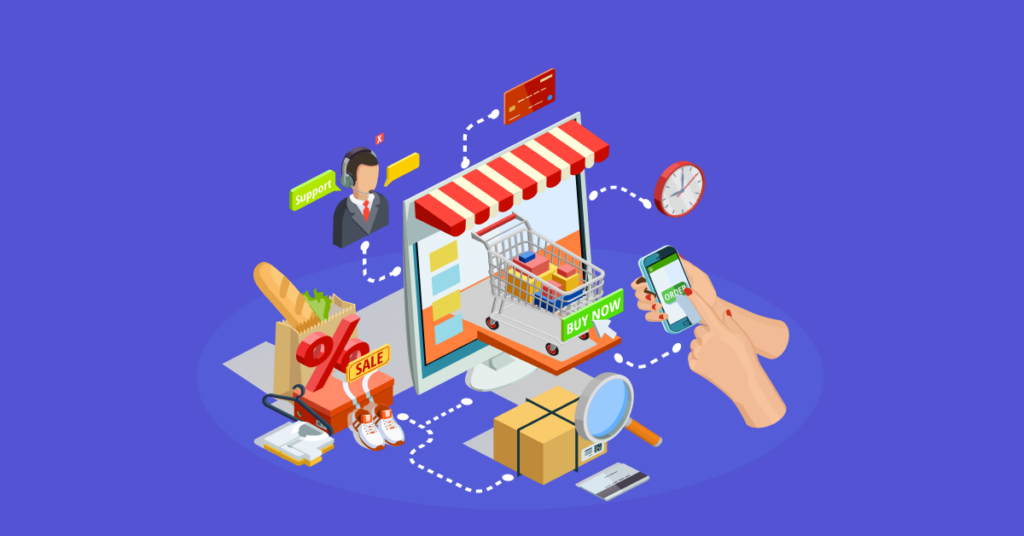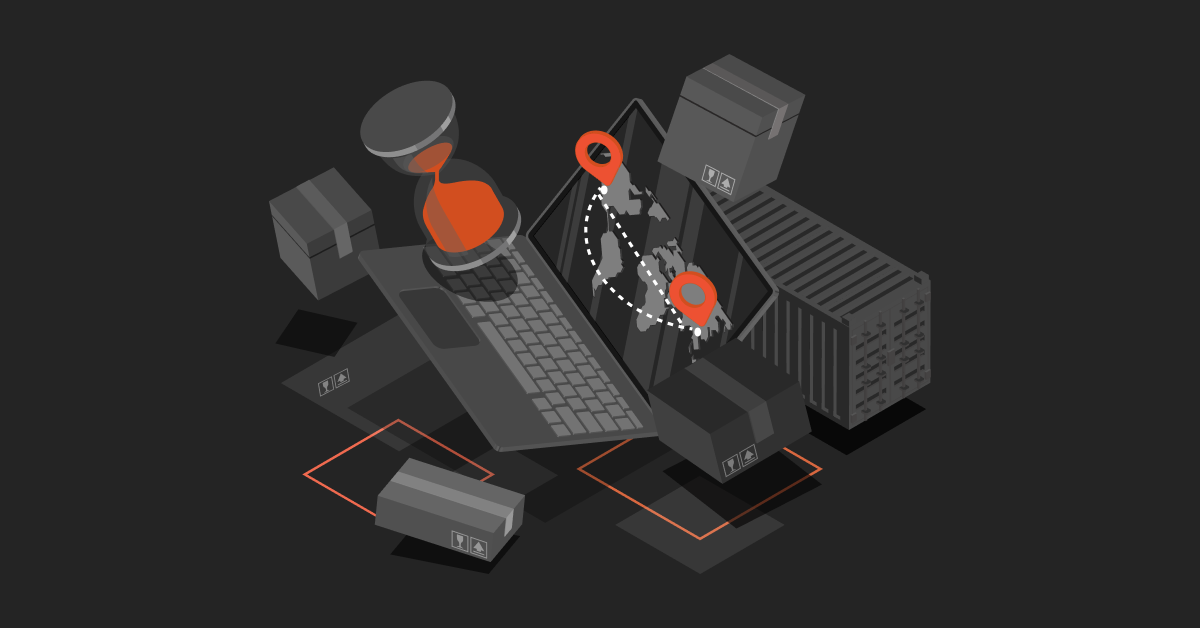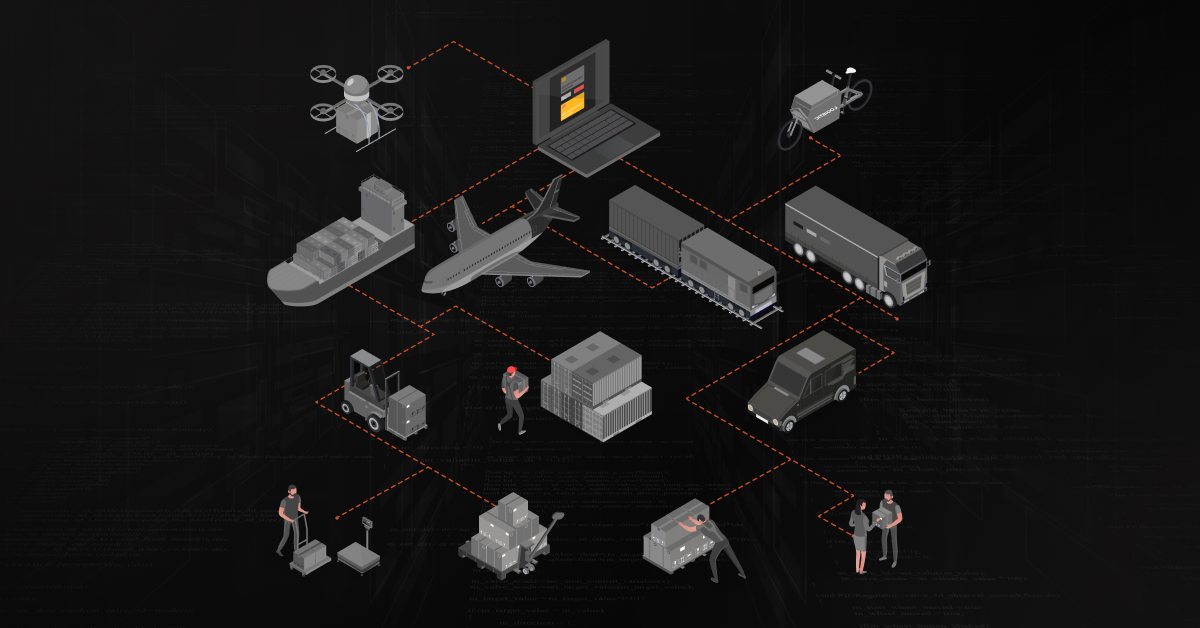The pandemic led to several key changes in the world, one of which is the rise in brands & enterprises implementing the Direct-to-Consumers (D2C) business model. Many small and large-scale businesses jumped on the bandwagon shifting their perceptions towards the D2C model, considering the ample opportunity it gave eCommerce to amplify the brand value and engage with customers.
The recent surveys and reports have brought exponential growth statistics, predicting an upsurge in the percentage of users purchasing from a Direct-to-Consumer company within the next 5 years.
If you are curious about this ongoing D2C trend, this is the right time to try your hands on it. Scroll to see steps to start a Direct-to-Consumer business model and build brand value.
Contents
Nuts & Bolts of Direct-to-Consumer (D2C) Business Model
As the name implies, Direct-to-Consumer (D2C or DTC) is a business model where companies sell the products directly to customers bypassing unnecessary touchpoints. This doesn’t necessarily mean eliminating middlemen entirely. But, it does enable manufacturers to engage with customers more independently.
According to the current trend, 55% of customers prefer to shop from a brand that directly engages with them rather than multi-brand retailers. D2C builds trust and helps brands build proximity in understanding customer behavior and requirements.
The boom in social media channels, IoT(Internet of Things), and mobile technology provide brands with extensive platforms to sell directly to consumers. It’s high time to embrace the change and set your journey to start a direct-to-consumer company.
Today, millennial consumers are living in a live streaming era. If you are going to stay back in the traditional selling point that involves long processes and clicks, you may lag in catching the pace of digital eCommerce. The US live streaming D2C market is expected to reach $11 Billion by the end of 2021.
 How Your eCommerce Business Can Leverage The Direct-to-Consumer Trend?
How Your eCommerce Business Can Leverage The Direct-to-Consumer Trend?
Direct-to-consumer business model is all about boosting customer experience. The end-to-end control in D2C gives businesses faster access to the market without compromising quality. Moreover, in the direct-to-consumer model, manufacturers can easily get customer data and tailor content & product by understanding their unique preferences.
Now, let’s see how the D2C model reduces friction in consumers’ shopping experience:
- Personalized Content & Optimize Products
- Control Brand Message Flow
- Builds App that Generates Value
- Provide Omnichannel Experience
- Initiate Digital Loyalty Programs
Is Direct-to-Consumer Business Model A Threat to Distributors?
D2C is considered a threat to distributors. But there are many ways you can flourish in a D2C environment through strategic relationships and digital transition. Upgrading traditional distribution norms through digitization helps you keep up with the pace of evolving business needs and requirements. It’s time to think about how you can utilize the flexibility in the direct-to-consumer business model to know your partners’ and customers’ unique needs and engage effectively.
Statistics predict D2C sales are expected to bring $6.6 trillion opportunities to distributors. Another study by Forrester Research to inspect the future of distributors in this D2C era, also shares similar sentiments, with findings including:
- 50% of manufacturers claim, the D2C landscape increased total revenue and helped partner channels and distributors Improve leads.
- 14% of distributors feel that D2C helped them to be involved in a successful trade, as the manufacturers test the efficiency of products or services before rolling it out to them.
- 54% of manufacturers believe D2C allows distributors to handle fulfillment for large orders.
- Distributors can focus on more profitable sales by letting manufacturers sell low-volume inventory items.
Distributors, Get ready to Evolve!
To avail of these benefits, wholesale distributors need to look into new revenue streams:
- Adopt digital transformation to keep up with Direct-to-consumer marketplaces trends and integrate an API-enabled ecosystem to bring transparency in transaction, back-end integration, incorporate order-to-cash process, and Omnichannel enablement.
- Invest in meaningful mergers and acquisitions to stay relevant and competitive.
- Strategize value-added services like credit financing, inventory management, and product expertise to maximize your value.
So, this is the right time to evaluate where you stand in the digital race. Adapt to the new D2C trend and amplify our digital presence to survive in the ever-evolving eCommerce market.
Challenges in Starting a Direct-to-Consumer Business Model
Though the Direct-to-consumer business model is a game-changer, there are many challenges businesses encounter when adopting a D2C business model. Lack of control over product experiences and expenses in maintaining a distribution channel are roadblocks that prevent bootstrapping eCommerce platforms from implementing a D2C business model.
Luckily, both small-scale and large-scale businesses can now experience transformation easier than ever before. A stellar Product Information Management (PIM) System may help you augment a successful D2C brand story.
Here are some major D2C transformation challenges and solutions you must know:
1. Regular Product Content Syndication
The sole responsibility of maintaining a product page can be difficult when you are on the verge of expansion. Ensuring completeness and quality can be challenging when you get ready for the transition without the assistance of a professional tool. Frequent content updates, distribution across multiple channels, and bulk data import and export are crucial to launching your product in the market at the right time.
 With a PIM tool, now you can easily syndicate all your content without any manual effort and errors. The automatic data collection, processing, and distribution accelerate faster market reach. Moreover, the PIM workflow tracking and logging help to improve productivity.
With a PIM tool, now you can easily syndicate all your content without any manual effort and errors. The automatic data collection, processing, and distribution accelerate faster market reach. Moreover, the PIM workflow tracking and logging help to improve productivity.
Find out more: How to Write a Killer eCommerce Product Description- 10 Practical Tips!
2. Boosting Brand Identity
Third-party platforms can help you sell your products. However, owning a direct selling channel improves brand value. If you are selling your product through Amazon & Flipkart, they treat you and your competitors in the same fashion. There is less space for customization.
On the other hand, a PIM-enabled content management system (CMS) may give you a platform to tailor your message and products by generating value for your customer.
3. Rolling Out New Sales Channels
Launching new sales channels and maintaining consistency across all the channels can be troublesome if you use spreadsheets and manual data entry methods. Every platform and social media channel has its own unique standards. Curating your content to match these unique standards can be difficult in the long run.
PIM helps distribute your content across all the channels by adhering to the norms and requirements of websites & social media channels. It automatically modifies your product information and digital data to enrich the user experience.
Recommended Reading: PIM Implementation Guide – Things to Know Before Getting Started
How to Start a Direct-to-Consumer Business Model?
1. Identify Your Customers’ Pain Points
Map your customers’ eCommerce journey and understand their pain points. There are numerous brands in the market, creating a unique experience is necessary to drive attention. Analyze challenges and friction customers experience while purchasing online. Provide a solution to address the disruptions and create value.
2. Create lifetime time value through Subscription Model
The subscription D2C model is one of the strategies that allow customers to subscribe for products they need regularly. It helps brands convert visitors into regular customers. Define your customer persona and replenishment requirements to choose the best subscription model. The subscription method provides you with a steady income from regular customers.
A subscription model helps to:
- Speed up real-time market penetration
- Collect customer data
- Increase profit
3. Integrate Professional Tools to Fuel Customer Service
Training your employees and facilitating them with customer service management tools helps to provide real-time assistance to customers. Selling direct-to-consumer can become a marketing pitfall if you fail in integrating the right strategy and tool in distributing your content across channels.
Right technology suit is necessary for every D2C business to provide customers with top-notch service. Integrating PIM-like technology might help you create compelling visual appeal to drive home your brand identity.
4. Eliminate Unnecessary Choices
Reducing options boosts sales! Too many choices are not good for D2C businesses. It may increase browsing time but may fail to bring meaningful conversion. Choice can impact your business negatively. It delays decisions and leaves customers confused. Smart selling is not about bringing all the choices under an umbrella. But it is about understanding the relevance, desire, and requirements of customers and selling them what they are looking for.
5. Develop a Robust Application
Statistics show 79% of smartphone users make a purchase online. So, building a native app can bring tremendous change to your business aura. Targeted push notification through native apps strengthens brand image and relationship with customers. And, the one-click payment option in D2C reduces cart abandonment due to long click processes. Moreover, the incorporation of artificial intelligence in apps provides customers with virtual try-on facilities helping brands regenerate in-store experience.
 6. Integrate Influencers & Customers in Content Creation
6. Integrate Influencers & Customers in Content Creation
The boom in social media channels has built an open space for manufacturers and customers to interact. Now, you can directly invite customers to scribble a word or share their experience through text or video messages on social media platforms. Also, you can collaborate with influencers to leverage traction, leads, and conversion.
7. Inculcate Headless eCommerce
Direct-to-consumer brands focus on customer experience. They need a CMS platform that enables frequent customization and faster integration. Consumer demands are changing day by day. Headless eCommerce provides brands room for customization and personalization without worrying about the backend configuration.
Benefits of Starting a Direct-to-Consumer Business Model
 D2C Brands can deliver excellent brand experiences by accessing the market at the right time.
D2C Brands can deliver excellent brand experiences by accessing the market at the right time. - The direct-to-customer relationship helps brands to collect data and optimize services for better performance.
- Customers find D2C companies more authentic and loyal. Direct engagement and sales channels boost credibility and scale-up profit margin.
- Help manufacturers and distributors coexist by supporting each other in maintaining a balanced D2C eCommerce space.
Brands That Curated Success Through D2C: Examples
Blue Apron
For Blue Apron, the top meal delivery service company, standing unique was necessary to compete with top subscription meal giants like Amazon. Their biggest pain point was a lack of medium to target customers. But, they found a solution by collaborating with local influencers in the town, creating podcasts and blogs. This helped them to increase sales and leverage their popularity.
For every D2C brand, frequent engagement with target customers is necessary to script success.
BarkBox
When Barkbox started its journey in 2012, it opted for a business model that facilitated customers’ convenience and value. Barkbox, being a dog goodies store, wanted to expand visibility across online channels amid the pandemic waves. Two things helped them to retain customers.
- They were unique in their services. Consumers had less choice in the online market for dog goodies
- They adopted the D2C subscription model on their website and sold their subscription boxes on the Amazon
Experience Transformation Through Direct-to-Consumer Business Model
Building a Direct-to-Consumer business model is no longer a difficult task. The emerging technology and professional tools are making the transition easy and hassle-free. The Internet has become the lifeblood of today’s consumer society. Stamping an appealing business presence in the digital ecosphere will get you a tremendous opportunity to know your customer, improve retention rate and build brand identity.
The DCKAP PIM product information management tool helps to create forward-looking plans to start a D2C selling channel by breaking down the complexities in content management, bulk data export, and import and multi-channel integration.
Are you game?
Hurry up! Plan the right PIM integration to scale up your business.




